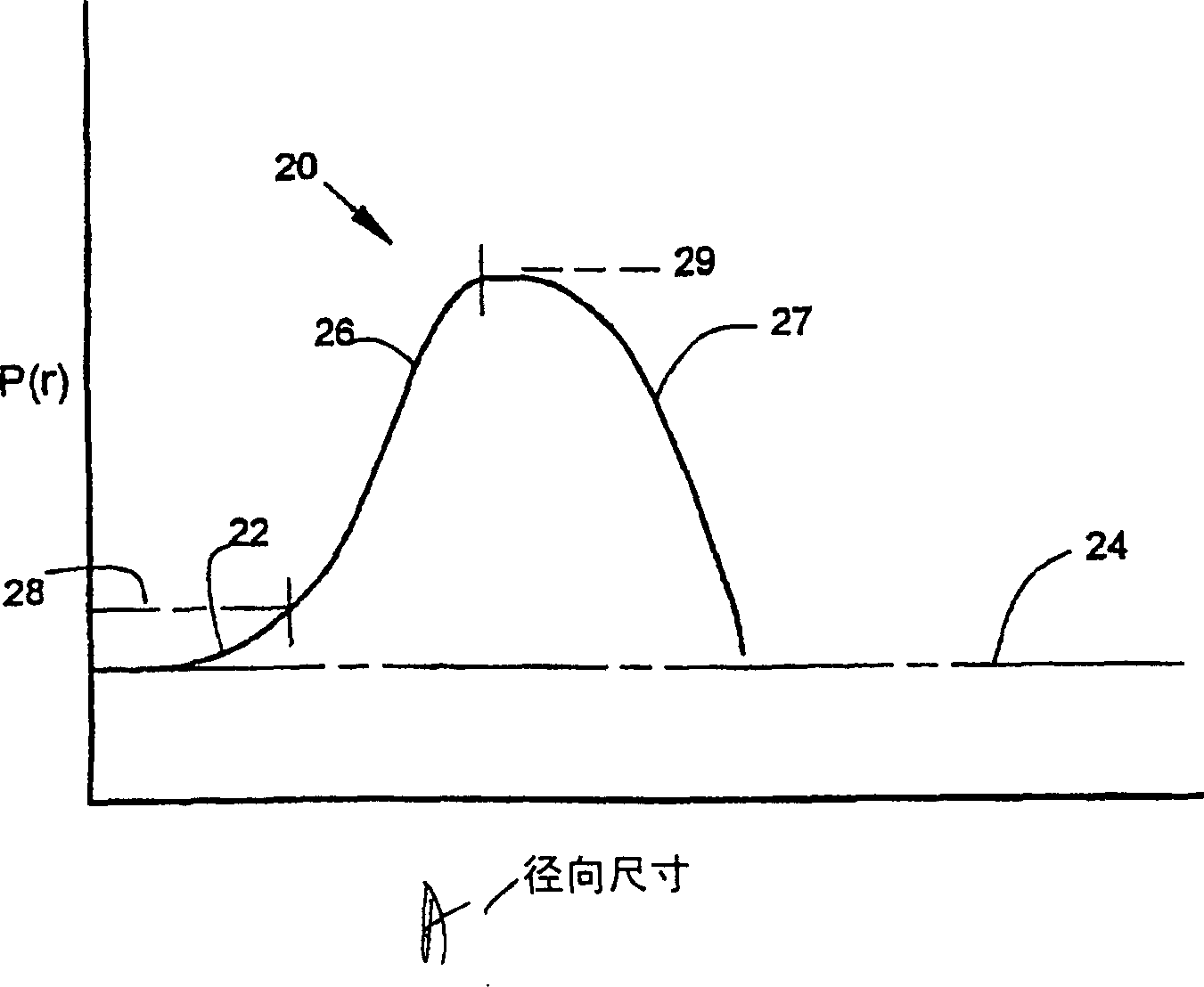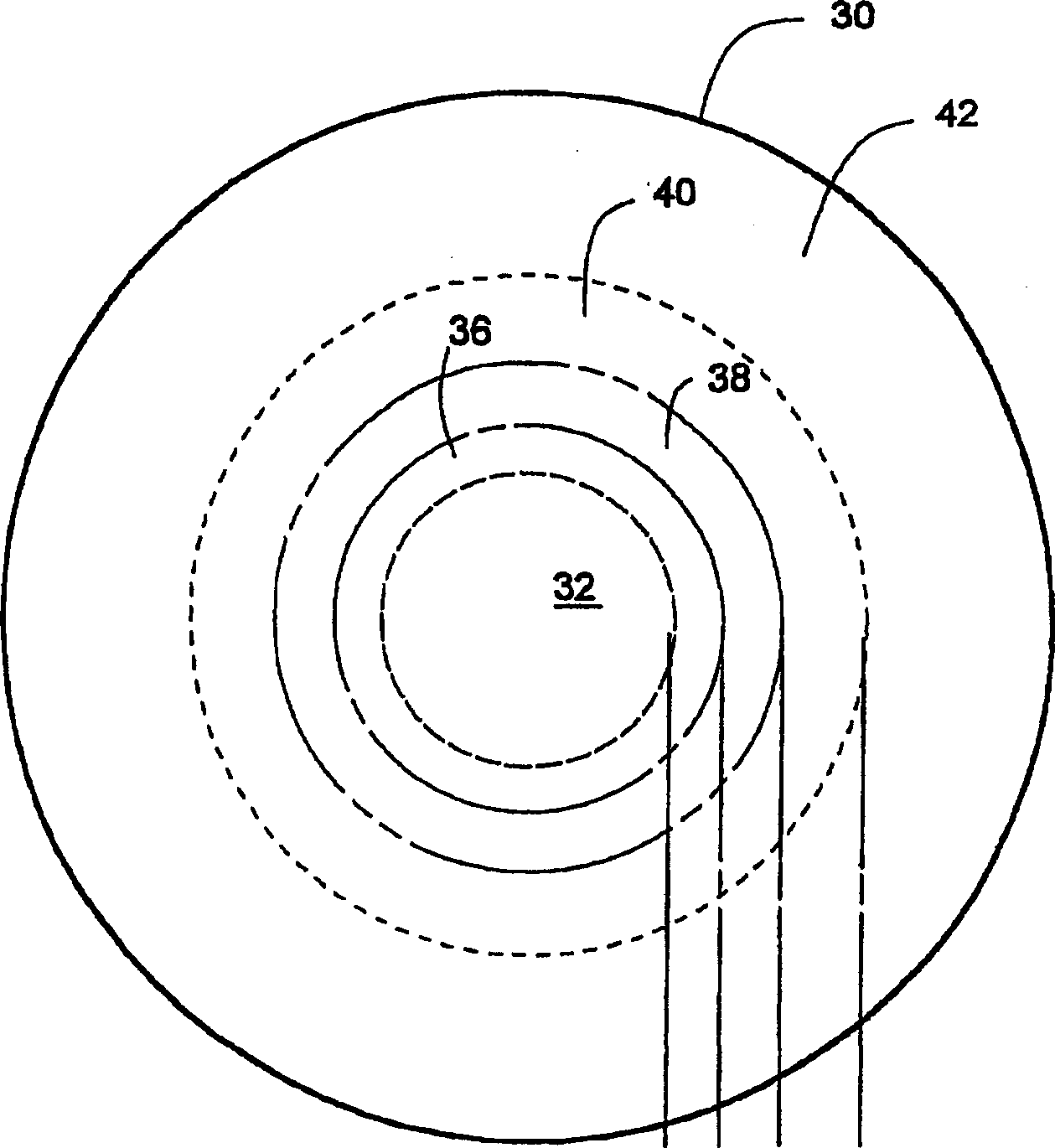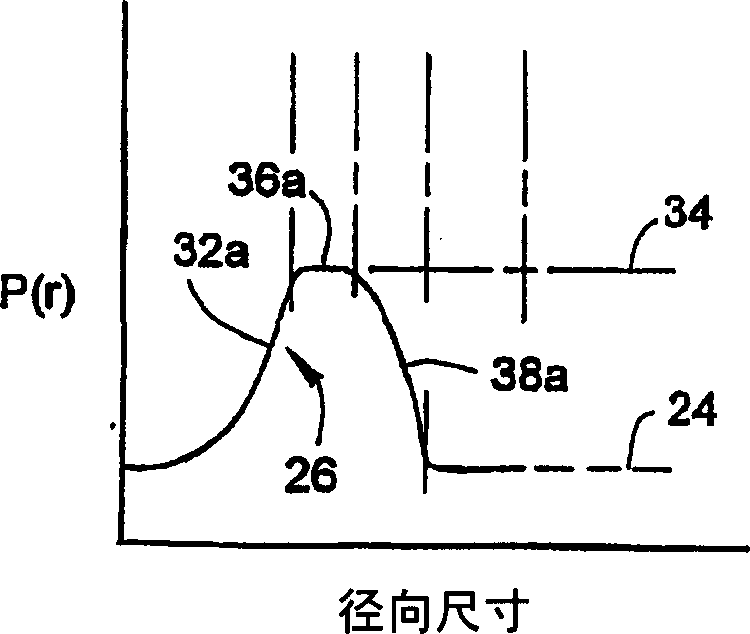Multifocal ophthalmic lens with induced aperture
A technology of lenses and spectacle lenses, applied in the field of multifocal eyepieces and lenses
- Summary
- Abstract
- Description
- Claims
- Application Information
AI Technical Summary
Problems solved by technology
Method used
Image
Examples
Embodiment Construction
[0026] figure 1 The local light intensity distribution 20 of one embodiment of the invention is depicted as a function of radial dimension from the apex. The vertical axis is the light intensity P(r), while the horizontal axis is the radial dimension from the apex. The centrally located distance vision zone 22 has a distance corrective strength effectively approaching the apex strength 24 . The distance correction strength is the strength required to correct vision when viewing objects at infinity. The desired strength of distance correction can vary according to the specific needs of the user. Optical power gradually increases with increasing radius in the distance vision zone 22 until a design level strength 28 is reached. The increase in intensity from the apex intensity 24 (distance vision intensity) to the intensity that causes blurring when entering the pupil edge is defined here as the design level 28 . Intensity increments that cause blurring in most people were fo...
PUM
 Login to View More
Login to View More Abstract
Description
Claims
Application Information
 Login to View More
Login to View More - R&D
- Intellectual Property
- Life Sciences
- Materials
- Tech Scout
- Unparalleled Data Quality
- Higher Quality Content
- 60% Fewer Hallucinations
Browse by: Latest US Patents, China's latest patents, Technical Efficacy Thesaurus, Application Domain, Technology Topic, Popular Technical Reports.
© 2025 PatSnap. All rights reserved.Legal|Privacy policy|Modern Slavery Act Transparency Statement|Sitemap|About US| Contact US: help@patsnap.com



